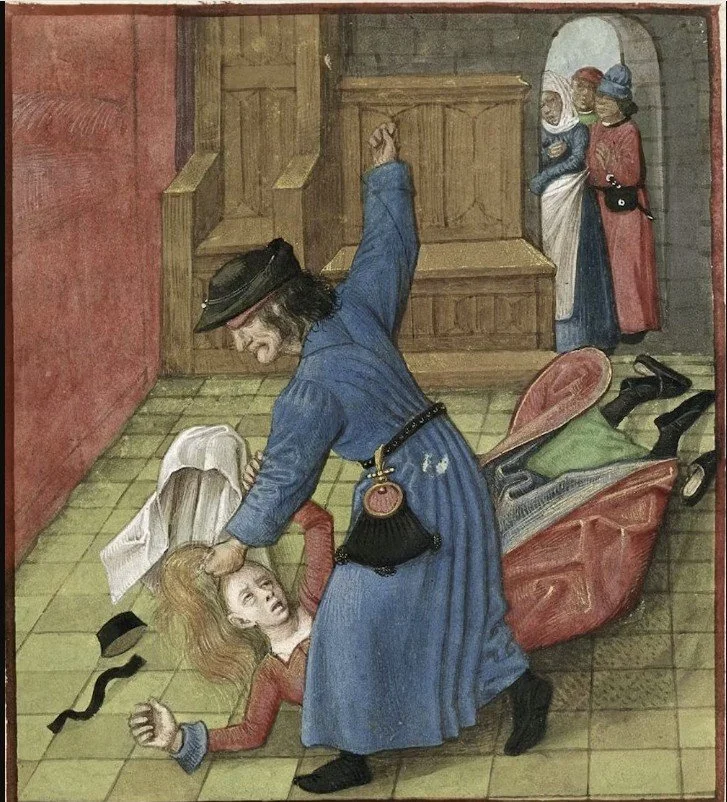WELCOME TO RACHEL’S BLOG
Scroll down to see the most recent posts, or use the search bar to find previous blogs, news, and other updates

Book Review: The Disgraced Knight's Redemption by Ella Matthews
As I hadn’t read the other two novels, I never really understood the details of the disgrace Sir Tristan had suffered, but it was clearly not his fault, and he was clearly an honourable man who just wanted to help out his friends (who’d had their own adventures in the previous books) and a great knight. He had a mission to fulfil on behalf of the king so he could overcome his ‘disgrace’. That mission, which he chose to accept, was to convince a young Welsh heiress to leave her castle and lands and go to court, so a man could take over.
The only problem was that she and her castle and small group of very loyal people were already under attack, about to be besieged by a treacherous neighbour who wanted her lands and castle.
Sir Tristan to the rescue! He, being a capable (and incredibly handsome) knight, trained the people and helped them withstand the siege. But he still intended on taking her to the king after, and fulfilling his mission.
What he didn’t reckon for (and neither did she) was the instalove and mutual attraction they’d find in each other.
How could he complete his mission when he was falling for her? How could she look after her people when she was distracted by him?
All in all, a lovely romance with themes of love, found family, redemption, honour, and ultimately a satisfying ending.
If you love classic love stories with a medieval flourish - castles, sieges and the like, then this one’s for you!

Who Was the Worst Misogynistic Villain of the 12th Century?
Beneath the poetry of the romantic idyll of medieval Europe their lay a darker reality - institutionalised misogyny. Many women - queens, countesses, widows, even nuns - were treated as pawns, prisoners, or prey by the very men who should have honoured them.
In this series, ‘Medieval Misogyny’, we’ve met five men whose names deserve to be remembered not for their glory, but for their cruelty. Each used his power to diminish, exploit, or abuse women. Now it’s time to decide: who was the worst villain of them all?

Geoffrey de Mandeville – The Terror of Widows and Nuns
It was in the chaos of the Anarchy that one man carved out a reputation so dark that even in an age of violence, his name stood out: Geoffrey de Mandeville, Earl of Essex.
Geoffrey inherited immense lands and titles but he wanted even more, shifting loyalties between Stephen and Matilda whenever it suited him, extorting charters and privileges from both. When Stephen finally moved against him in 1143, Geoffrey unleashed a reign of terror across eastern England.
Chroniclers such as the Peterborough Chronicle and Orderic Vitalis described him as a robber baron, commanding brutal mercenaries who pillaged the countryside. Hardly chivalric, the man was a misogynist bully who preyed on the weak. For women, especially widows and nuns, he was the Devil’s own demon.

Philippe II (Augustus) of France Humiliated Queen Ingeborg
A Wedding Day Turned Nightmare
On 14 August 1193, the cathedral at Amiens was filled with splendour. Nobles crowded in, candles glowed, and choirs sang as King Philip II of France — called Augustus for his ambition — married Ingeborg of Denmark, a daughter of King Valdemar I.
It was a diplomatic triumph. The marriage would secure French ties to Denmark, giving Philip allies in the north and prestige across Christendom. Ingeborg, known for her piety and education, arrived prepared to be queen of France.
But before the day was out, her life turned into a nightmare.

Fulk V of Anjou: the King Who Beat His Queen
When Fulk arrived in Jerusalem, he wasted no time in asserting himself. Rather than rule alongside Queen Melisende as Baldwin had intended, he began sidelining her in every act of government. Charters that once bore her name alone now appeared only with Fulk’s. The Angevin knights who followed him filled the court, and Melisende’s supporters were dismissed.
Chroniclers tell us that Fulk acted as if Jerusalem were his by right, ignoring the fact that he was only there through his wife’s inheritance. To medieval men, this seemed natural. To Melisende’s followers, it was an outrage.

Matthew of Boulogne — The Count Who Kidnapped a Nun
In 1160, Matthew seized Marie from Romsey Abbey and forced her into marriage. Chroniclers condemned the act as a violation of holy vows. John of Salisbury, writing in the period, described the outrage with which churchmen viewed the marriage. It was a scandal even by the rough standards of the age.
Marie was wrenched from her abbey, stripped of her religious identity, and thrust into the role of countess against her will. For women in the Middle Ages, the cloister was often seen as protection from such forced unions — but not for Marie.

